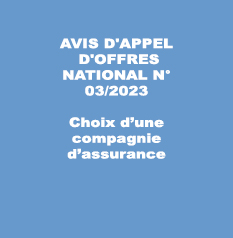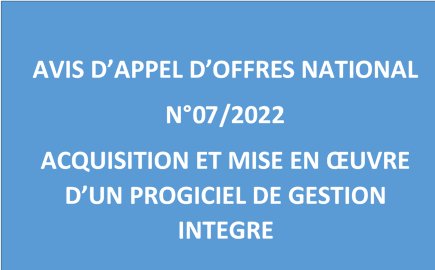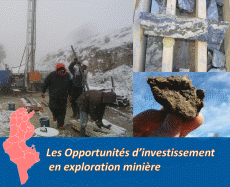| Programme annuel & rapport de suivi technique |
-

Rapport d'activités 2023
-

Programmes Techniques 2024
|
| Géocatalogue |

|
| Appels d'Offres |
-

ACQUISITION DES TICKETS RESTAURANT POUR LE PERSONNEL DE L’ONM
-

CHOIX D’UNE COMPAGNIE D’ASSURANCE
-

ACQUISITION ET MISE EN ŒUVRE D’UN PROGICIEL DE GESTION INTEGRE
|
|
Investir en Tunisie |


|
|
|
|
|
::
Documentation and Editions
>>
Research library
|
| |
|
[
Search by author
]
[
Search keyword
]
[
Search by index
]
[
Search by category
]
|
title of the reference :
|
Clays in Tunis.
|
|
Publication Date:
|
1997
|
|
Author :
|
Jamoussi Fakher, Mubarak M.B., Abassi Ali, Tallek S.
|
|
Catalogue type :
|
Livre
|
|
Catalogue reference :
|
Clays in Tunis. first Mining Conf in the Great Jamahiriya Clay in Tunis are used in several purposes as ceramics, china, bricks, in drilling and casting. These purpose need large amount of different clays. High cost of importing different clays (in 1993 about 8.5million dollars)was the mine reason wich led the research for local beposits wich lack analysis and evalution. Hence, we evaluated all work done in such field and studied the exposed clay beds in different localities in Tunis. For example, Triassic clays in the south which belong to the desert platform consist of illite and kaolinite. Furthermore, Jurassic clay in the phosphatic basin of Gafsa consist of kaolinite, whereas, lower and upper Cretaceous and paleocene clays consist of illite and smectite respectively. Moreover, kaolonite palygorskite exits in Tertiary deposit and becomes abundant in paleocene clay studies in North Tunis was concentrated in paleocene age. For exemple, paleocene clays consist of kaolinite, illite and few smectite. Whereas, Eocene and Oligocene clays have also the same composition with few and/or high smectites. Finally, after physical and chemical investigations of these clays we tried to evaluate them and to know thier use industry as in oil refining with smectites and in brick and ceramic industry using illite and kaolinite. All of these experiments were foud to be encouraging. argile ; Tunisie ; Tunis Mubarak M.B. Abassi Ali Tallek S. Jamoussi Fakher Gîtologie
|
|
Indexation decimale :
|
Gîtologie
|
|
Keywords :
|
argile ; Tunisie ; Tunis
|
|
Summary :
|
Clay in Tunis are used in several purposes as ceramics, china, bricks, in drilling and casting. These purpose need large amount of different clays. High cost of importing different clays (in 1993 about 8.5million dollars)was the mine reason wich led the research for local beposits wich lack analysis and evalution. Hence, we evaluated all work done in such field and studied the exposed clay beds in different localities in Tunis. For example, Triassic clays in the south which belong to the desert platform consist of illite and kaolinite. Furthermore, Jurassic clay in the phosphatic basin of Gafsa consist of kaolinite, whereas, lower and upper Cretaceous and paleocene clays consist of illite and smectite respectively. Moreover, kaolonite palygorskite exits in Tertiary deposit and becomes abundant in paleocene clay studies in North Tunis was concentrated in paleocene age. For exemple, paleocene clays consist of kaolinite, illite and few smectite. Whereas, Eocene and Oligocene clays have also the same composition with few and/or high smectites. Finally, after physical and chemical investigations of these clays we tried to evaluate them and to know thier use industry as in oil refining with smectites and in brick and ceramic industry using illite and kaolinite. All of these experiments were foud to be encouraging.
|
|
Exemplaries :
|
TU1999
|
|
|
|
|
|
|
|



